-
 Bitcoin
Bitcoin $115100
-2.99% -
 Ethereum
Ethereum $3642
-1.38% -
 XRP
XRP $3.027
-5.51% -
 Tether USDt
Tether USDt $1.000
-0.05% -
 BNB
BNB $763.4
-1.32% -
 Solana
Solana $177.2
-5.42% -
 USDC
USDC $0.9999
-0.02% -
 Dogecoin
Dogecoin $0.2247
-6.47% -
 TRON
TRON $0.3135
0.23% -
 Cardano
Cardano $0.7824
-4.46% -
 Hyperliquid
Hyperliquid $42.53
-0.97% -
 Stellar
Stellar $0.4096
-6.09% -
 Sui
Sui $3.662
-2.61% -
 Chainlink
Chainlink $17.63
-3.57% -
 Bitcoin Cash
Bitcoin Cash $536.3
2.94% -
 Hedera
Hedera $0.2450
0.34% -
 Avalanche
Avalanche $23.23
-3.15% -
 Litecoin
Litecoin $112.2
-1.23% -
 UNUS SED LEO
UNUS SED LEO $8.976
-0.30% -
 Shiba Inu
Shiba Inu $0.00001341
-2.72% -
 Toncoin
Toncoin $3.101
-2.44% -
 Ethena USDe
Ethena USDe $1.001
-0.05% -
 Uniswap
Uniswap $10.08
-1.97% -
 Polkadot
Polkadot $3.938
-2.77% -
 Monero
Monero $323.9
0.87% -
 Dai
Dai $0.9999
-0.02% -
 Bitget Token
Bitget Token $4.481
-1.69% -
 Pepe
Pepe $0.00001199
-5.94% -
 Aave
Aave $288.2
-0.68% -
 Cronos
Cronos $0.1279
0.36%
Where to find the S-1 filings for ETH ETFs?
An S-1 filing signals an asset manager's intent to launch an Ethereum ETF, offering transparency on structure, fees, and compliance via the SEC’s EDGAR database.
Jul 25, 2025 at 01:21 am
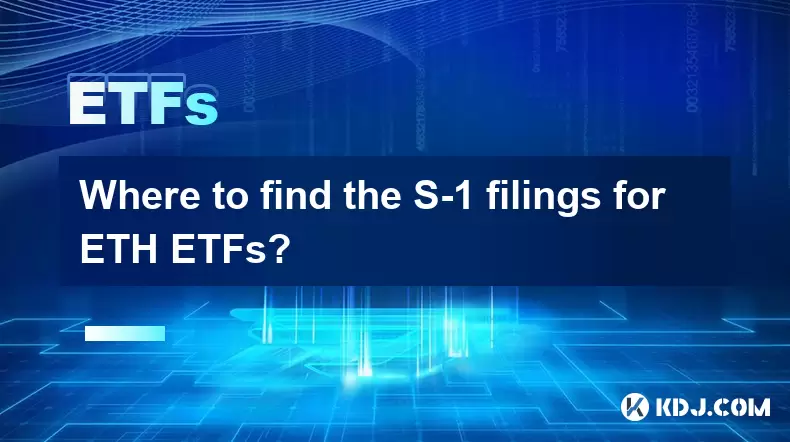
Understanding S-1 Filings in the Cryptocurrency Context
An S-1 filing is a regulatory document that companies must submit to the U.S. Securities and Exchange Commission (SEC) before going public or offering new securities for sale. In the context of Ethereum ETFs, an S-1 filing indicates that an asset manager intends to launch an exchange-traded fund (ETF) backed by Ethereum (ETH). These filings contain crucial information about the fund’s structure, fees, risks, and custodianship arrangements.
For investors and analysts tracking the development of crypto-based ETFs, accessing these documents is essential. The S-1 form provides transparency into how the ETF will operate, what protections are in place for investors, and whether it aligns with current SEC guidelines on digital assets.
The Role of the SEC's EDGAR Database
The primary source for locating S-1 filings is the SEC’s EDGAR (Electronic Data Gathering, Analysis, and Retrieval) database. This platform offers free access to all publicly filed documents related to securities offerings in the United States.
To find S-1 filings for ETH ETFs:
- Visit the official EDGAR website
- Use the search bar to look for filings under specific company names or ticker symbols
- Filter results by form type “S-1”
- Look for filings submitted by known asset managers pursuing crypto ETFs, such as BlackRock, Fidelity, Grayscale, or Ark Invest
The EDGAR database ensures that all relevant filings are available to the public in real time, making it the most reliable and official channel for accessing these critical documents.
Tracking Announcements from ETF Providers
Many asset management firms actively announce their intentions to file for crypto ETFs through press releases, investor letters, or social media updates. Once an institution files an S-1 form, they often issue a follow-up announcement that includes a direct link to the SEC’s EDGAR page for that specific filing.
For example, when BlackRock filed for its Ethereum ETF, it published a blog post detailing the submission and providing a link to the corresponding S-1 filing. Similarly, Fidelity Digital Assets has shared detailed reports and documentation following its own ETF submissions.
Following these providers directly via:
- Official websites
- Investor relations pages
- Twitter/X accounts
- Email newsletters
can provide timely updates and ensure you’re among the first to access newly filed S-1 documents related to ETH ETFs.
Leveraging Crypto News Platforms and Analysts
Several cryptocurrency news platforms and independent financial analysts specialize in monitoring ETF developments and breaking down complex regulatory filings for broader audiences. Websites like Coindesk, The Block, and Cointelegraph frequently publish articles summarizing key details from recent S-1 filings related to Ethereum ETFs.
These platforms not only highlight where to find the original documents but also offer expert commentary and comparisons between different ETF proposals. Additionally, many analysts track these filings closely and share direct links or summaries on:
- Substack newsletters
- X (Twitter) threads
- YouTube videos
Engaging with this content can help users locate S-1 filings more efficiently while gaining deeper insights into their implications.
Using Financial Data Platforms and APIs
Advanced investors or institutional researchers may prefer using financial data platforms such as Bloomberg Terminal, Reuters Eikon, or Morningstar to access S-1 filings programmatically. These tools allow users to search for filings based on issuer name, ticker symbol, or filing date.
Additionally, some platforms provide API access to SEC filings, enabling developers or quantitative analysts to automate the retrieval of S-1 forms for ETH ETFs. Tools like:
- Sec-api.io
- XBRL US API
- Alpha Vantage SEC filings API
offer structured JSON responses containing the full text of S-1 filings, which can be parsed and analyzed at scale.
This method is particularly useful for those who want to compare multiple filings simultaneously or integrate real-time filing updates into their investment workflows.
Frequently Asked Questions
Q: Can I find S-1 filings for international ETH ETFs on EDGAR?
A: No, the SEC’s EDGAR database only includes filings for U.S.-listed securities. International ETFs may be regulated by other agencies, such as the UK Financial Conduct Authority (FCA) or European Securities and Markets Authority (ESMA).
Q: Are S-1 filings confidential before public release?
A: No, once submitted, S-1 filings become public documents accessible via the EDGAR database unless the filer requests confidential treatment during the initial submission phase.
Q: How often do ETF providers update their S-1 filings?
A: Updates depend on the SEC’s feedback and any material changes to the fund’s structure. Amendments to the original S-1 filing are common and appear as “Amendment #” entries in the EDGAR system.
Q: What should I look for in an ETH ETF’s S-1 filing?
A: Key sections include the investment objective, fee structure, custody arrangements, risks associated with Ethereum, and the sponsor’s experience in managing ETF products.
Disclaimer:info@kdj.com
The information provided is not trading advice. kdj.com does not assume any responsibility for any investments made based on the information provided in this article. Cryptocurrencies are highly volatile and it is highly recommended that you invest with caution after thorough research!
If you believe that the content used on this website infringes your copyright, please contact us immediately (info@kdj.com) and we will delete it promptly.
- TOKEN6900: The Next Big Meme Coin? Presale Heats Up!
- 2025-07-26 05:30:35
- ONDO Breakout Assessment: Whales, Wallets, and What's Next?
- 2025-07-26 05:30:35
- Kaspa's Strongest Month REVEALED: New Data Shocks KAS Traders!
- 2025-07-26 04:30:12
- Cross-Border Payments Revolution: Stablecoins and Payment Providers Leading the Charge
- 2025-07-26 04:50:12
- Crypto Losses: From ZIRP to Zero - How I Lost a Million Dollars (and What You Can Learn)
- 2025-07-26 04:30:12
- Strategy, Bitcoin, and Preferred Stock: A New York Minute on Saylor's Bold Bet
- 2025-07-26 04:50:12
Related knowledge
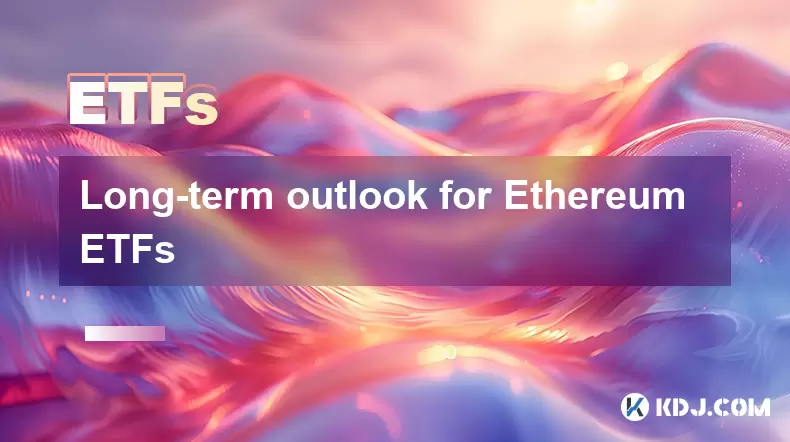
Long-term outlook for Ethereum ETFs
Jul 22,2025 at 06:42am
What Exactly Is an Ethereum ETF?An Ethereum Exchange-Traded Fund (ETF) is a financial product that tracks the price of Ethereum (ETH) and is traded on...
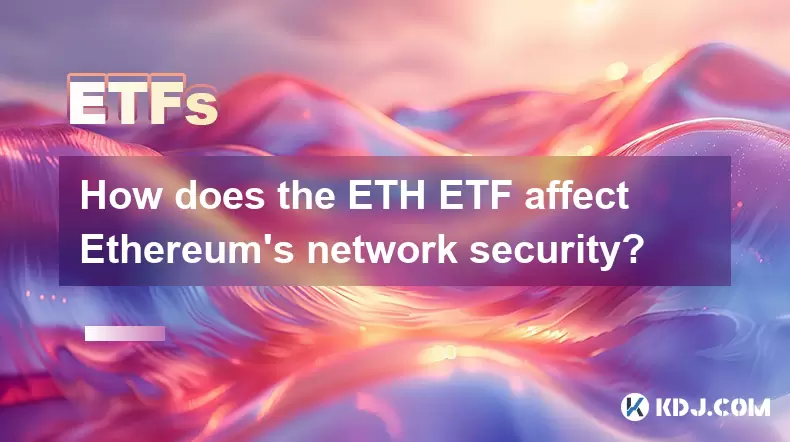
How does the ETH ETF affect Ethereum's network security?
Jul 17,2025 at 01:29pm
Understanding the ETH ETF ConceptAn Ethereum Exchange-Traded Fund (ETH ETF) is a financial product that allows investors to gain exposure to Ethereum ...
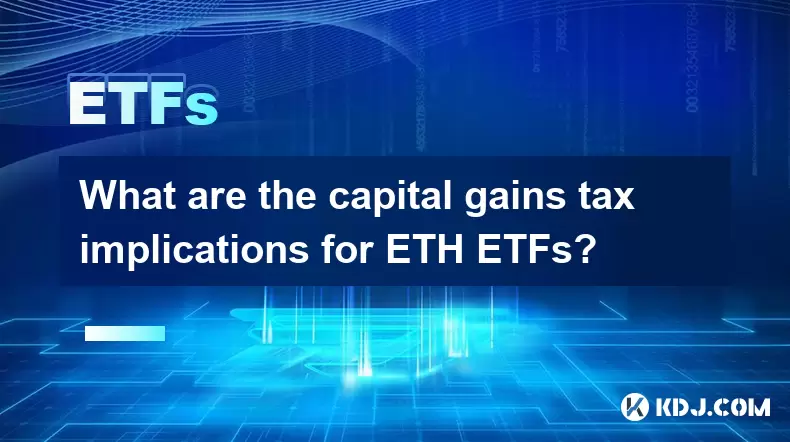
What are the capital gains tax implications for ETH ETFs?
Jul 18,2025 at 08:00am
Understanding Capital Gains Tax in Cryptocurrency InvestmentsCapital gains tax is a tax imposed on the profit realized from the sale of an asset that ...
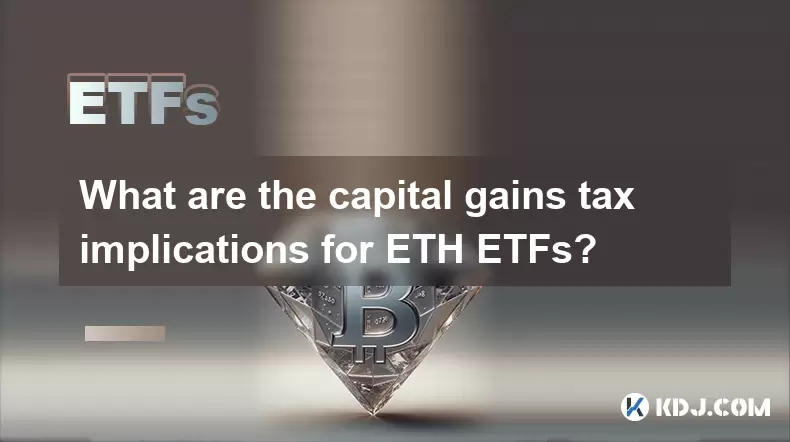
What are the capital gains tax implications for ETH ETFs?
Jul 21,2025 at 11:14am
Understanding ETH ETFs and Their TaxationAn Ethereum Exchange-Traded Fund (ETH ETF) allows investors to gain exposure to Ethereum without directly own...
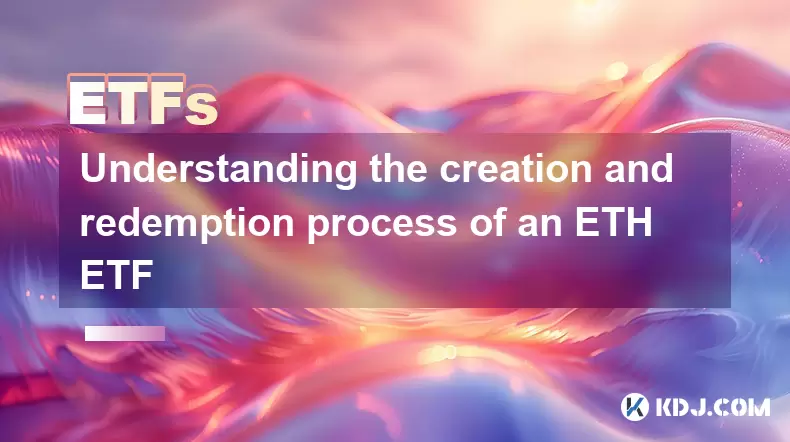
Understanding the creation and redemption process of an ETH ETF
Jul 19,2025 at 07:36am
What is an ETH ETF?An ETH ETF (Ethereum Exchange-Traded Fund) is a financial product designed to track the price of Ethereum without requiring investo...

How to analyze which ETH ETF is the best choice
Jul 19,2025 at 05:01pm
Understanding ETH ETFs and Their RelevanceEthereum Exchange-Traded Funds (ETFs) have emerged as a popular investment vehicle for those seeking exposur...

Long-term outlook for Ethereum ETFs
Jul 22,2025 at 06:42am
What Exactly Is an Ethereum ETF?An Ethereum Exchange-Traded Fund (ETF) is a financial product that tracks the price of Ethereum (ETH) and is traded on...

How does the ETH ETF affect Ethereum's network security?
Jul 17,2025 at 01:29pm
Understanding the ETH ETF ConceptAn Ethereum Exchange-Traded Fund (ETH ETF) is a financial product that allows investors to gain exposure to Ethereum ...

What are the capital gains tax implications for ETH ETFs?
Jul 18,2025 at 08:00am
Understanding Capital Gains Tax in Cryptocurrency InvestmentsCapital gains tax is a tax imposed on the profit realized from the sale of an asset that ...

What are the capital gains tax implications for ETH ETFs?
Jul 21,2025 at 11:14am
Understanding ETH ETFs and Their TaxationAn Ethereum Exchange-Traded Fund (ETH ETF) allows investors to gain exposure to Ethereum without directly own...

Understanding the creation and redemption process of an ETH ETF
Jul 19,2025 at 07:36am
What is an ETH ETF?An ETH ETF (Ethereum Exchange-Traded Fund) is a financial product designed to track the price of Ethereum without requiring investo...

How to analyze which ETH ETF is the best choice
Jul 19,2025 at 05:01pm
Understanding ETH ETFs and Their RelevanceEthereum Exchange-Traded Funds (ETFs) have emerged as a popular investment vehicle for those seeking exposur...
See all articles

























































































